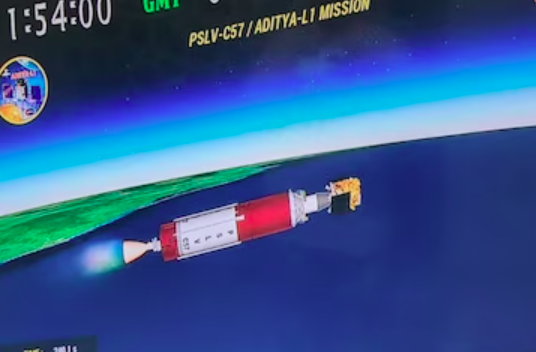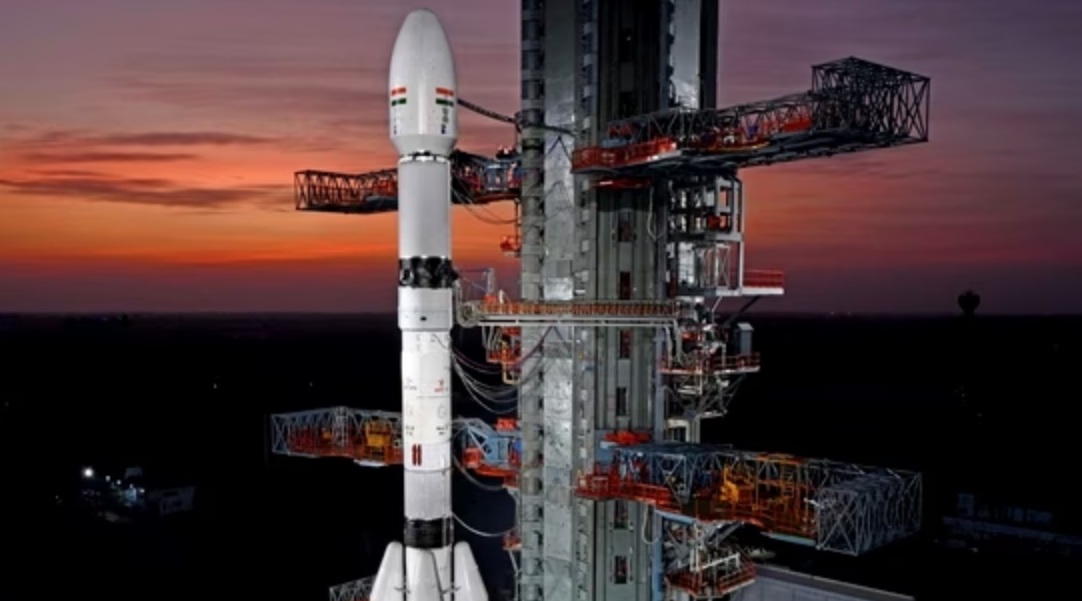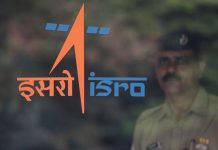ISRO’s Aditya-L1 Mission: India’s Bold Leap into Solar Exploration
Unveiling India’s Solar Ambitions: Aditya-L1 Takes Center Stage
In a remarkable display of technological prowess, India’s space agency, ISRO, has achieved yet another milestone by launching the Aditya-L1 spacecraft aboard a PSLV rocket. This solar mission marks India’s inaugural step towards studying the sun, shedding light on solar winds and their potential impacts on Earth.

A Triumph After Lunar Success: Aditya-L1 Joins the Fray
Hot on the heels of India’s groundbreaking achievement in landing on the moon’s south pole before Russia, ISRO has unleashed the Aditya-L1 spacecraft. This marks a bold leap for the nation’s space endeavors, as it ventures into the study of the sun’s mysteries through its first solar mission.
Spectacular Launch Event: A Glimpse of Aditya-L1’s Liftoff
As the PSLV rocket roared into the sky, leaving a trail of smoke and fire, scientists and enthusiasts alike gathered at the launch site to witness this historic moment. The live broadcast on ISRO’s website garnered nearly 500,000 viewers, reflecting the widespread interest in India’s scientific endeavors.
Aditya-L1’s Objectives: Exploring Solar Winds and Gravitational Equilibrium
Aditya-L1’s mission is twofold: to study solar winds, a phenomenon that can influence Earth’s auroras, and to reach a strategic “parking lot” in space known as Lagrange Points. These points, named after Joseph-Louis Lagrange, maintain a gravitational balance, allowing the spacecraft to conserve fuel as it embarks on a four-month journey covering approximately 1.5 million km.
Protecting Satellites: Aditya-L1’s Impact on Earth’s Communication Network
The mission holds significant promise in safeguarding communication satellites from the adverse effects of solar radiation. Energy particles emitted by the sun can disrupt satellites, causing communication outages. Aditya-L1’s findings could potentially mitigate these challenges, ensuring the reliability of global communication networks, including private initiatives like SpaceX’s Starlink.
Unveiling Solar Mysteries: Long-term Implications of the Aditya-L1 Mission
The data collected by the Aditya-L1 mission could offer insights into Earth’s climate patterns and the origins of solar wind. Scientists anticipate a deeper understanding of the sun’s influence on our planet’s climate and the flow of particles throughout the solar system.
Frequently Asked Questions About ISRO’s Aditya-L1 Mission
1. What is the purpose of the Aditya-L1 mission?
The mission aims to study solar winds and their effects on Earth while exploring the gravitational equilibrium of Lagrange Points.
2. How can I watch the Aditya-L1 launch?
ISRO’s live broadcast on its website attracted nearly 500,000 viewers during the launch event.
3. How does Aditya-L1 protect communication satellites?
By studying solar radiation’s impact on satellites, Aditya-L1’s findings could contribute to safeguarding communication networks from disruptions.
4. What are Lagrange Points, and why are they important?
Lagrange Points are positions in space where gravitational forces are balanced, allowing objects to remain relatively stationary. Aditya-L1 will utilize these points to conserve fuel during its mission.
5. How does the Aditya-L1 mission align with India’s space ambitions?
The launch of Aditya-L1 showcases India’s growing space capabilities and ambitions, demonstrating its prowess in space technology.




